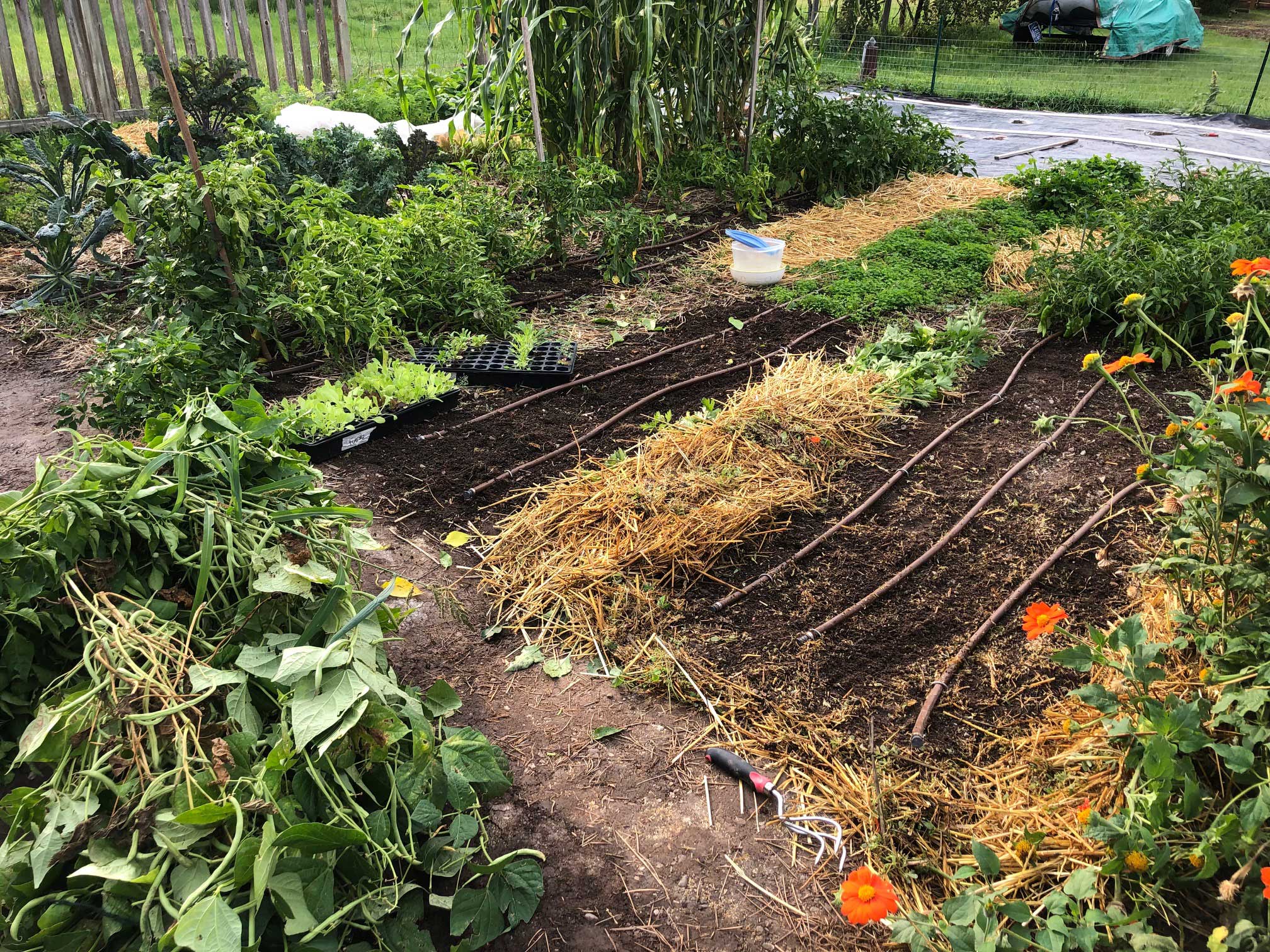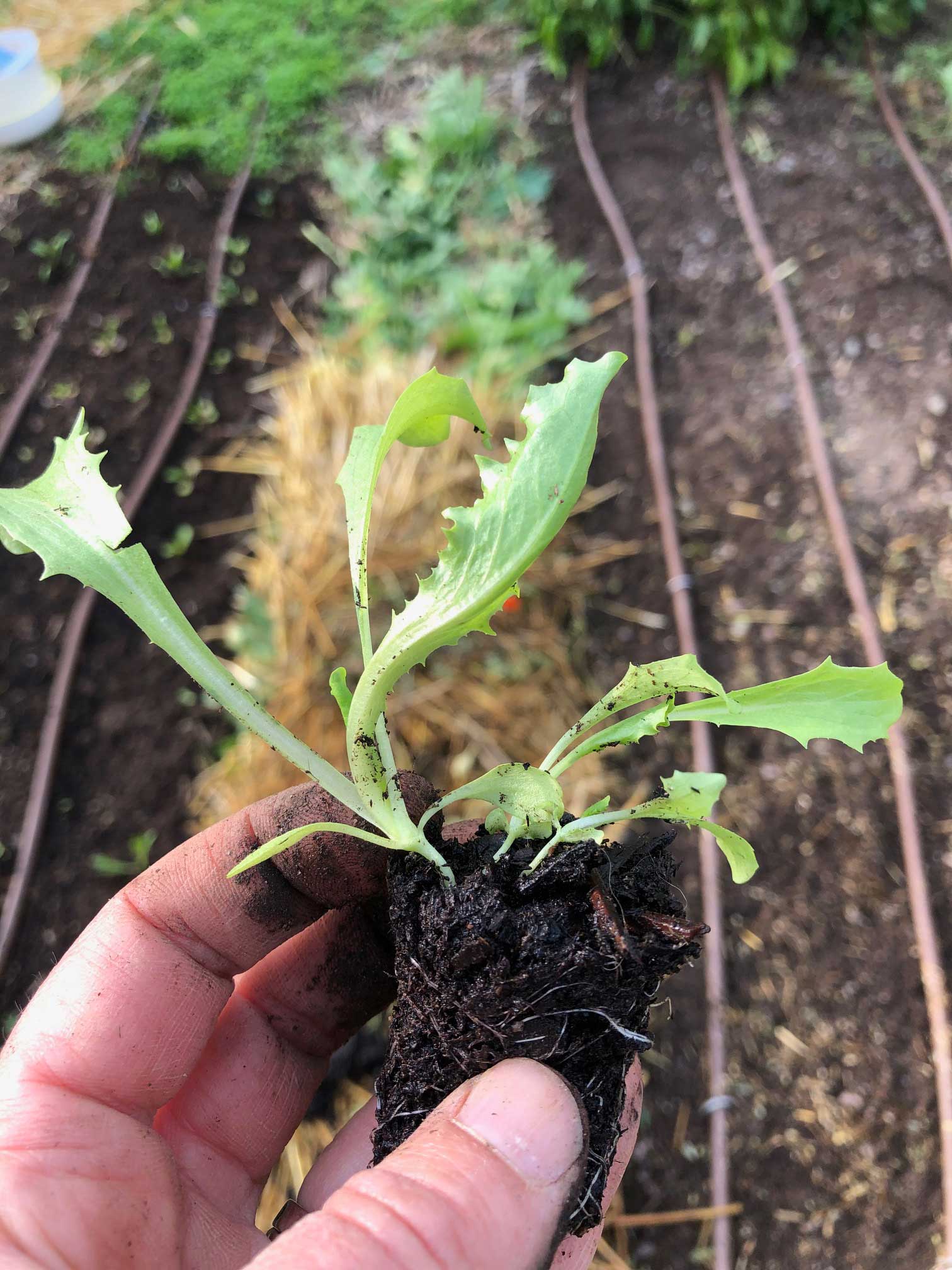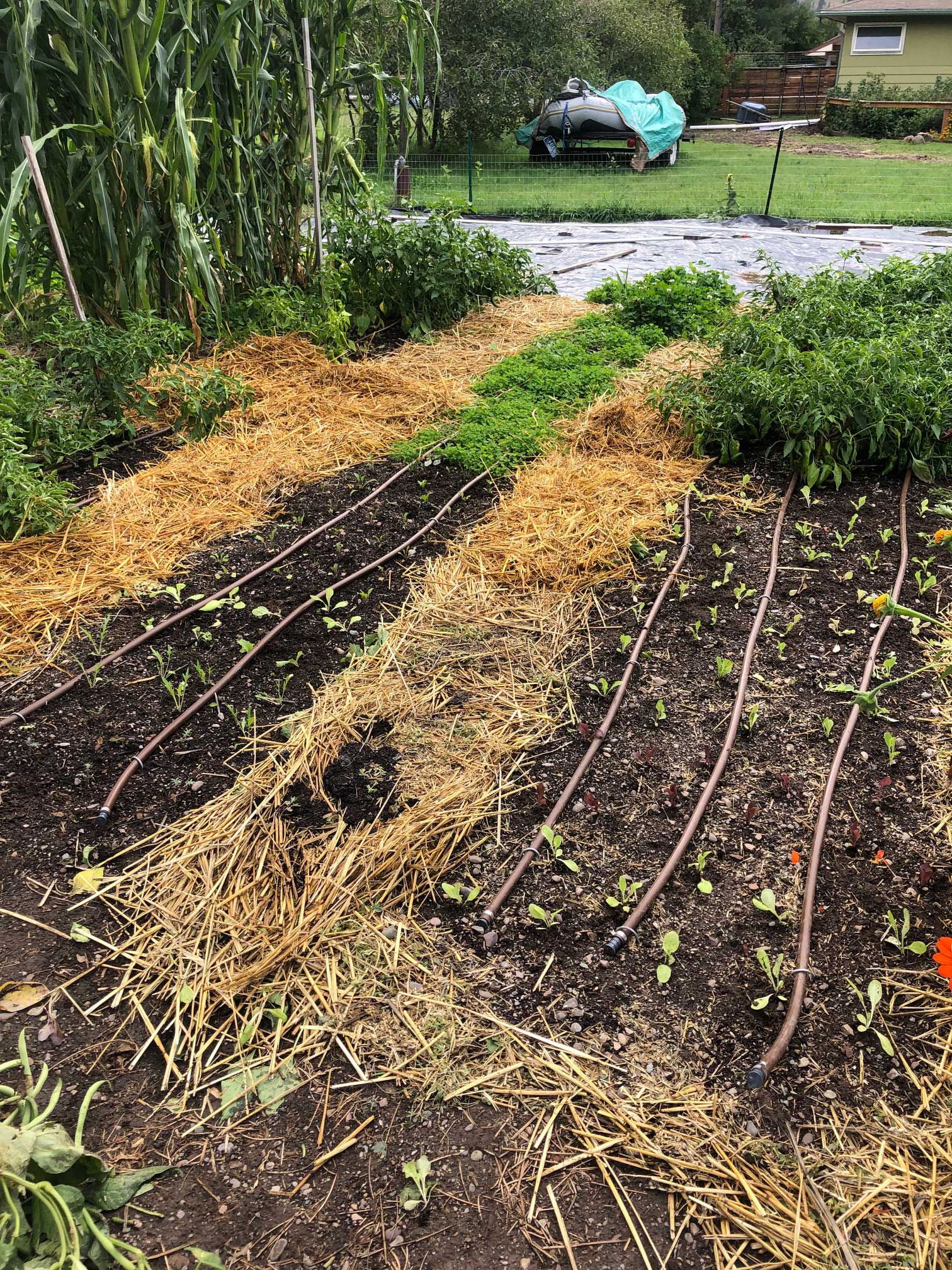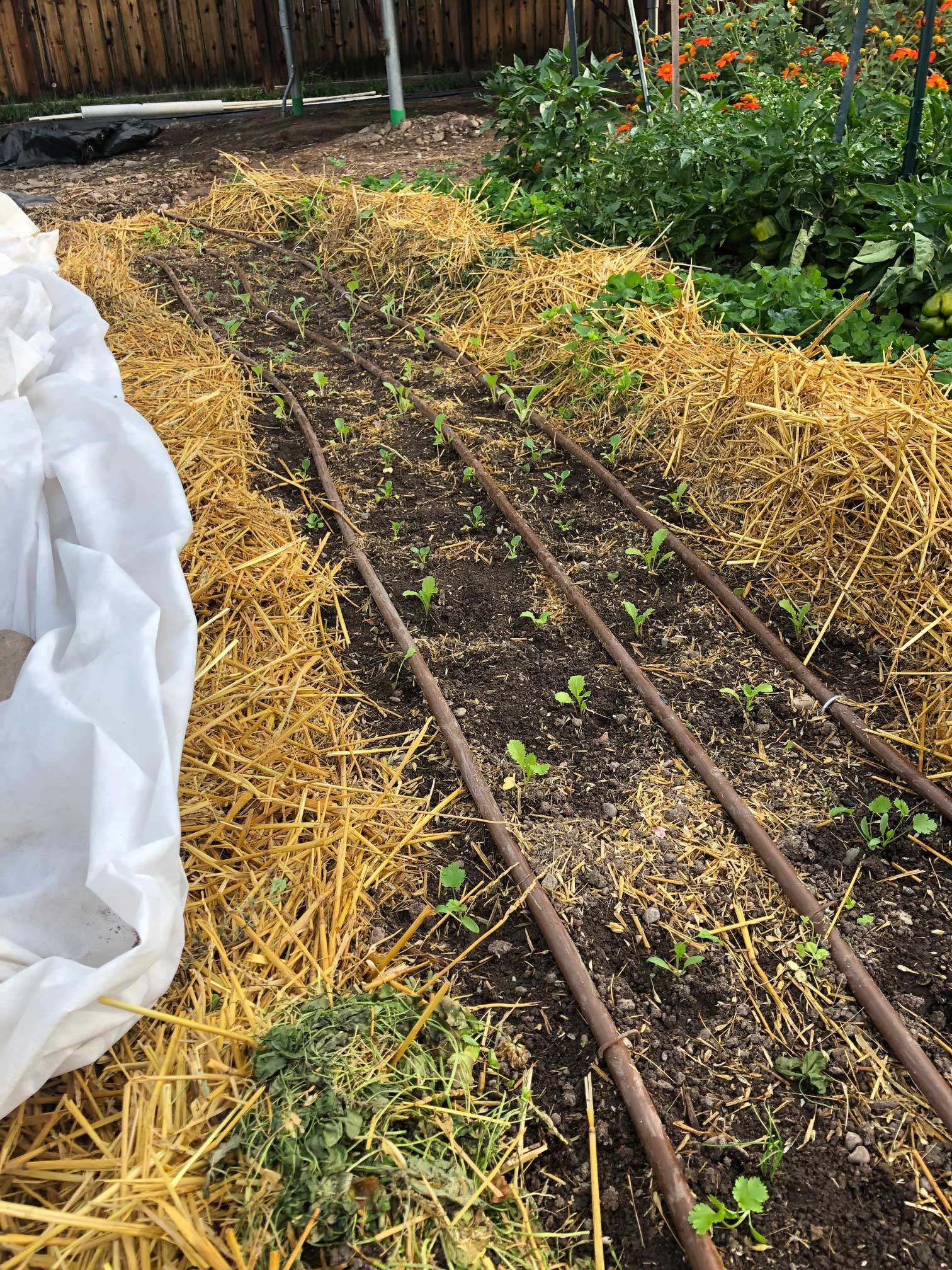Growing Winter Greens
This blog was written in 2019 by past Garden City Harvest board member Winona Bateman. Winona has a backyard farm that incorporates permaculture with traditional organic gardening. She has had huge success with her winter greens. If you want that too, read on.
Assorted winter greens started in a flat. Starting greens this way allows you to control growing conditions.
Tall crops and shade cloth can help protect greens in the ground during late summer.
My favorite time to garden is late summer and early fall. Tomatoes are coming in by the bucket loads. Most of the weeds slow down. I get to pull plants, plant cover, and start putting things to rest. It’s also the time--at least the best time--to plant my favorite crops: greens.
Some years of course I plant nothing, ready for a rest after gardening all summer. But the years I do decide to keep going, and plant more, I get obsessed. I limit myself to twelve varieties of lettuce—one per row in a flat—seems reasonable. I am truly obsessed with lettuce, and the beauty of growing your own is you can try so many more types than offered at the store or market. I love variety in my salad bowl: reds, light green, deep forest green, and especially freckled Forellenschluss. I promise myself that I will keep track, compare varieties by taste, and then know--next time--which three or four to plant en masse. I also plant kale, mustard greens, pak choi, tatsoi, collards, spinach, and my all time favorite, arugula.
Like spring, early autumn tends to be wetter and cooler than summer. But ideally your greens go in the ground--or at least get started--before the cool sets in—and now in September it’s not uncommon to have some pretty hot days. It’s tricky, greens hate hot, but they need time to grow so that when the snow flies, you have established plants from which you can harvest. So you need a few tricks and tools to have success.
Controlling Growing Conditions
I often start my winter greens in early August in flats. This way I can move the plants around, leave them out overnight and into cool mornings, and move them to shade or even inside when temperatures soar.
I also plan my garden to include patches of shade. This year, I grew an early crop of beets and next to it my corn. After the beets were pulled and the corn was coming up, I planted greens where the beets had been. By the time I was on round two for greens the corn towered over the greens. They enjoyed direct early morning sun, but by the afternoon were shaded by the corn. On really hot days, I added shade cloth (sometimes doubled over) to keep them even cooler and thus avoid turning the leaves bitter.
Out with the Old in with the New
When I decide to wrap up the season at the end of summer, I love pulling plants and planting cover crop, or mulching the beds heavily. I feel thankful to the rich soil that provided so much to our family all season long. But I also love clearing rows and prepping them for a whole new crop!
I usually need to mulch walkways again, adding more straw or plant matter to protect the well-worn pathways. and I typically have shade cloth at the ready so when a hot afternoon strikes, I can easily cover the tender greens.
Of course, each year I plant winter greens, I find myself with less time than I’d like, and on the day the temperatures seem to take a permanent dip, I race to plant. All hope of tracking lettuce varieties is lost. I plant by color, texture, what’s pleasing to the eye. I plant the tall stuff—kale and collards to the north of everything else—the long light of autumn will offer enough shade to the smaller plants. I ruthlessly pick the best plants from flats, because I never have enough room. It’s not perfect. It’s often frenzied. Sometimes I feel like it’s too much.
So you may feel ready to wrap it up at the end of the season. I know, I have felt that way many years. But if ever you feel inspired to keep the green alive, into the dwindling light of autumn—you will be richly rewarded.
One November I harvested the last of my arugula for Thanksgiving--it was mulched in straw, and its leaves packed a pungent punch, but it was so incredibly satisfying, almost sublime, to walk out through the snow and pull salad from my garden to give thanks.





additional Resources for fall and winter gardening
For more information on crop types and timing, check out this blog on Summer Sowing for a Fall Harvest!
If you are too tired from your summer gardening season and don’t have the motivation to plant greens, read this blog on how to plant garlic!
Or consider planting a cover crop to improve your soil health!
For more information on how to protect your plants from the cold fall temps to come click the button below:


